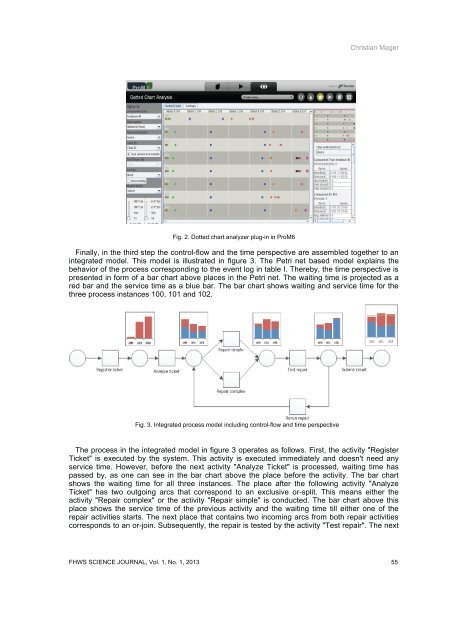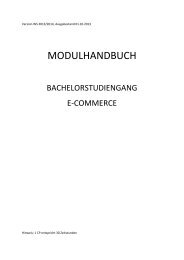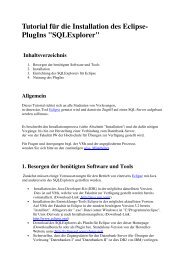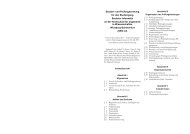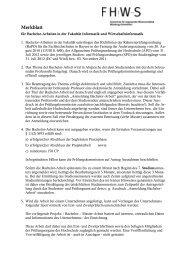FHWS Science Journal - Fakultät Informatik und Wirtschaftsinformatik
FHWS Science Journal - Fakultät Informatik und Wirtschaftsinformatik
FHWS Science Journal - Fakultät Informatik und Wirtschaftsinformatik
You also want an ePaper? Increase the reach of your titles
YUMPU automatically turns print PDFs into web optimized ePapers that Google loves.
Christian Mager<br />
Fig. 2. Dotted chart analyzer plug-in in ProM6<br />
Finally, in the third step the control-flow and the time perspective are assembled together to an<br />
integrated model. This model is illustrated in figure 3. The Petri net based model explains the<br />
behavior of the process corresponding to the event log in table I. Thereby, the time perspective is<br />
presented in form of a bar chart above places in the Petri net. The waiting time is projected as a<br />
red bar and the service time as a blue bar. The bar chart shows waiting and service time for the<br />
three process instances 100, 101 and 102.<br />
Fig. 3. Integrated process model including control-flow and time perspective<br />
The process in the integrated model in figure 3 operates as follows. First, the activity "Register<br />
Ticket" is executed by the system. This activity is executed immediately and doesn't need any<br />
service time. However, before the next activity "Analyze Ticket" is processed, waiting time has<br />
passed by, as one can see in the bar chart above the place before the activity. The bar chart<br />
shows the waiting time for all three instances. The place after the following activity "Analyze<br />
Ticket" has two outgoing arcs that correspond to an exclusive or-split. This means either the<br />
activity "Repair complex" or the activity "Repair simple" is conducted. The bar chart above this<br />
place shows the service time of the previous activity and the waiting time till either one of the<br />
repair activities starts. The next place that contains two incoming arcs from both repair activities<br />
corresponds to an or-join. Subsequently, the repair is tested by the activity "Test repair". The next<br />
<strong>FHWS</strong> SCIENCE JOURNAL, Vol. 1, No. 1, 2013 55


